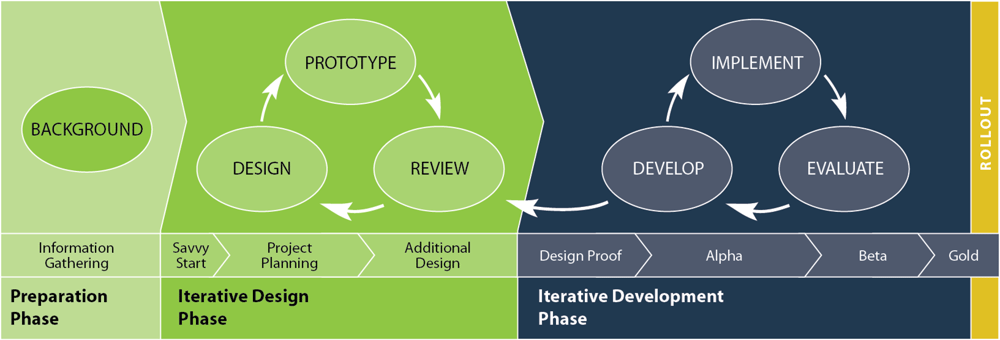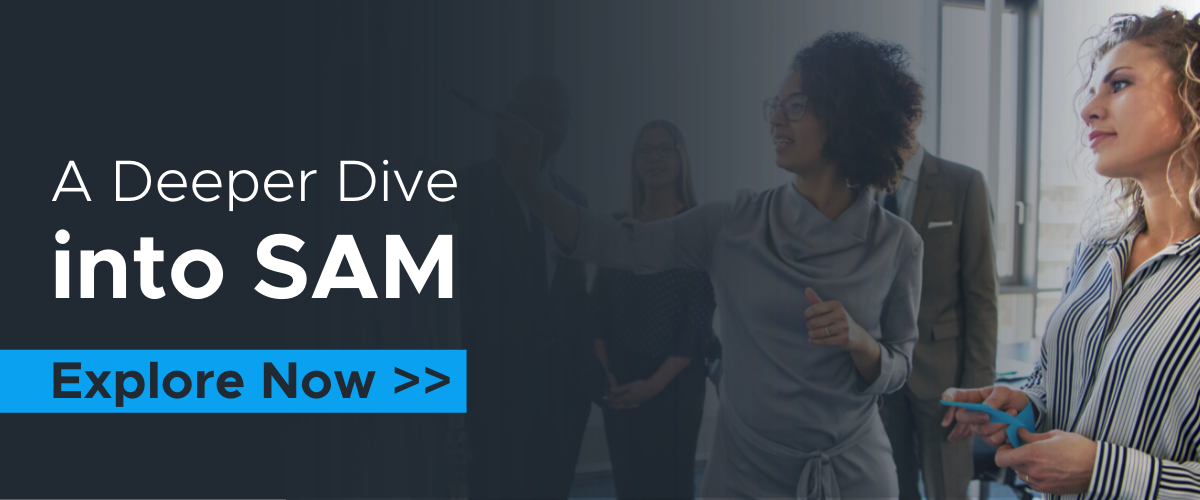Blog
Deeper Learning™: How to Actually Get the Results You Care About
As someone that spent years, if not decades working in and teaching both ADDIE and SAM (the model I created), I felt it was imperative to comment on ...

.png?width=1387&height=526&name=2023%20Blog%20Covers%20and%20In-Line%20Graphics%20(65).png)
ADDIE vs SAM: A Comparison of Common Characteristics
By Michael Allen | January 12, 2022 | Custom Learning | 0 Comments
As someone that spent years, if not decades working in and teaching both ADDIE and SAM (the model I created), I felt it was imperative to comment on these two models that continue to be discussed and compared is a topic that seems to be trending quite strongly now.
Every company has a model they follow for various reasons. It may be a specific model that has been in practice for decades that has led to their success. Likewise, an organization may choose a model to switch things up and become more competitive in delivering better products and services to their respective stakeholders. Whatever the case, selecting a model can sometimes be a divisive―and often difficult―decision as it has a profound impact on not only the stakeholders but how your team chooses to operate. The impact is felt daily by everyone involved.
Here at Allen Interactions, we use SAM, the Successive Approximations Model, as our instructional design and development process for creating custom learning solutions. SAM has been the development vehicle for Allen Interactions to help many of our clients create quality and effective learning solutions. But to be fair, SAM may not be the best fit for your organization’s training development needs.
If the process you use meets your requirements and produces the quality product you want, you have the right process for you.
- Dr. Michael Allen
For that reason, let’s look at two of the most popular models used in instructional design and e-learning today, ADDIE and SAM, and break down what each is, how each is implemented, and where its impact can best be felt within your organization.
We’ll cover each model by viewing each of them through a list of common characteristics in a straightforward manner so you can choose the best option for you and/or your organization’s learning and development needs.
Meet ADDIE: Analysis, Design, Development, Implementation, and Evaluation
The original ADDIE Model was born out of work completed at Florida State University for the U.S. military. It was developed to be an effective and efficient instructional design system for training development and delivery for the armed forces—primarily for people with little formal training, if any, on instructional design. Later, ADDIE was coined a waterfall process, because each phase was to be completed in sequence before moving on to the next phase. There are now many adaptations of the original ADDIE, but in this blog, we are referring to the traditional ADDIE Model. Instructional Designers and project managers may prefer this model because it provides structure and focuses on planning.
Meet SAM: the Successive Approximations Model

SAM Background
Created by Dr. Michael Allen, Founder & CEO, Allen Interactions, SAM is an iterative development process for building learning solutions that drive measurable gains and human performance. When Agile was defined as a revolutionary process for software development, it became apparent that the two processes agreed on many fundamental concepts. The goal of each process is to quickly produce functioning learning projects that can be tested for strengths and weaknesses and improve them iteratively.
One of the key activities in SAM is the SAVVY Start, a brainstorming event that focuses on learner performance outcomes. In the SAVVY Start, a prospective approach is proposed, and the question is asked, “Why shouldn’t we do this?” Many good answers are expected, and iterations begin immediately. This model may appear to have less preparation and because of its iterative cycles, it may feel less structured to designers and developers, which could be overwhelming.
Structure
ADDIE is known as a waterfall process because of its linear nature, meaning, that each phase (Analysis, Design, Development, Implementation, Evaluation) needs to be completed in sequential order before moving on to the next phase in the process. ADDIE calls for a significant amount of upfront analysis and research. Developers may be able to scope out development needs more accurately in the early stages of the design process, which can reduce the investment in resources and time for the given project. On the flip side, errors that arise in ADDIE can be difficult to reverse, since you may be several phases into the process before an issue is identified and escalated.
SAM is known for its iterative and cyclical development phases, with continual design, prototyping, and review in the Iterative Design Phase and cycles of Development, Implementation, and Evaluation in the Iterative Development Phase. Because of the continuous cycles and reviews of ongoing work, mistakes, errors, or issues are caught early on and resolved before the project is too far down the road and those fixes have become timely and costly.
Versatility
ADDIE and SAM can both be used for a wide range of learning development programs, subject matter, niche, or learning outcomes.
Adaptability
ADDIE is more linear where each phase is completed before moving on to the next. It doesn’t allow for much flexibility when it comes to changes or issues that arise throughout each phase. Valuable ideas often arise late in the process as the final product begins to take shape and can be evaluated.
SAM's cycles within each phase allow flexibility and change during design and development for changes of scope, enhancements, or resolving issues that crop up along the way. The team isn’t stuck with an initial idea and can make course corrections throughout the process.
Collaboration/Interactions
ADDIE lends itself to more a siloed design and development approach, which can reduce collaboration and interaction among those working on completing each step. On a positive note, however, this can allow specific experts to create each piece to specifically focus on his or her part which can then be handed off to the next individual or team for development. Handoff meetings are usually scheduled to inform the incoming team of decisions made during development led by the outgoing team.
SAM's Iterative Design Phase kicks off with the Savvy Start, a collaborative brainstorming session that brings together key stakeholders and establishes the project’s foundation and performance outcomes. From this point on, the iterative cycles of continuous review focus on collaboration and consistent communication between the development team and project stakeholders.
Much like my approach, “If the process you use meets your requirements and products the quality product you want, you have the right process for you."
We here at AI, use SAM with great success and have done so for many years. An important thing to remember is that with any model, be sure to leave time and resources to discuss how well it works for those involved and where things can be improved or changed. A finished product that is shippable to your stakeholders is the first piece, but ensuring the model works for the development teams is a very close second.

About the Author: Michael Allen
Go to https://www.alleninteractions.com/bio/dr-michael-allen Michael W. Allen, PhD, has been a pioneer in the e-learning industry since 1970. For decades, Allen has concentrated on defining unique methods of instructional design and development that provide meaningful, memorable, and motivational learning experiences through enhanced cognitive interactivity. He developed the advanced design and development approaches we have used at Allen Interactions for the past three decades, including CCAF-based design and the SAM process for iterative, collaborative development. Michael is a prolific writer, sought-after conference speaker, and recognized industry leader, having written or edited nine books on designing effective e-learning solutions, including his latest edition: Michael Allen’s Guide to e-Learning. He has contributed chapters to textbooks and handbooks published by leading authors and associations.
Comments
Would you like to leave a comment?
Related Blog Posts
.png?width=316&name=2023%20Blog%20Covers%20and%20In-Line%20Graphics%20(49).png)
By: Michael Allen | May, 2023
Category: Custom Learning, Dr. Michael Allen
.png?width=316&name=2023%20Blog%20Covers%20and%20In-Line%20Graphics%20(8).png)
Blog
3 Essential Concepts to Evolve e-Learning Experiences
As someone that spent years, if not decades working in and teaching both ADDIE and SAM (the model I created), I felt it was imperative to comment on ...
By: Michael Allen | Jan, 2023
Category: Custom Learning
.png?width=316&name=2023%20Blog%20Covers%20and%20In-Line%20Graphics%20(41).png)
Blog
Revolutionizing the Future of Training with Deeper Learning™
As someone that spent years, if not decades working in and teaching both ADDIE and SAM (the model I created), I felt it was imperative to comment on ...
By: Michael Allen | Mar, 2023
Category: Custom Learning


